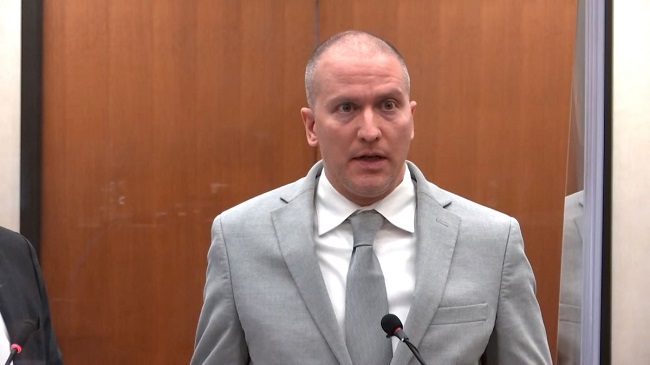Minnesota’s capital city, Minneapolis, is home to Watching the George Floyd murder trial has given people across the world a chance to see a wide range of defence and prosecution strategies for swaying the jury.
There are a few methods and terminology used in Derek Chauvin’s trial that aren’t commonly heard in criminal courtrooms. To better understand what viewers are seeing and hearing, the AP has taken a deeper look at them.

Components Of The Effect
On May 25, Chauvin was filmed putting his knee on Floyd’s neck for about 10 minutes. Attorneys for the defendant must, however, raise questions about whether the former officer was personally responsible for the killing of the Black man. He may have died from drug usage or other circumstances, they’ve argued.
Last year, a medical examiner ruled that the compression of Floyd’s neck by police during his arrest contributed to his death. There were also “other contributing problems,” such as constricted blood vessels and recent fentanyl consumption, stated on the death certificate.
That “didn’t cause the death,” according to Hennepin County Chief Medical Examiner Dr. Andrew Baker.
Second and third-degree murder and manslaughter charges have been filed against Chauvin.
Attorney Eric Nelson has maintained that the officer followed his training and that Floyd’s death was a result of illegal narcotics and other health issues.
When Someone Says to you, “I ate too Many Drugs,” you know Exactly What they Mean.
Floyd shouted, “I ate too many drugs” while he was restrained by police on Wednesday, according to Nelson.
If Floyd said, “I ate too many drugs,” did Nelson ask Los Angeles Police Department sergeant Jody Stiger, an expert witness on the prosecution’s use of force, after playing the short clip from the body camera video?
Stiger muttered, “I can’t make that out,” in response. To confirm that this was indeed what Floyd appeared to say, Nelson played it back for senior special agent James Reyerson of the Minnesota Bureau of Criminal Apprehension
A longer section from the same body camera video was repeated by prosecutor Matthew Frank in order to place Floyd’s statement into a larger perspective.
After Reyerson explained what he thought Floyd had said, he said something like, “I ain’t use no drugs,”
Excited Delirium
Several Minneapolis police officers have testified that the force used to subdue and detain Floyd on the sidewalk was excessive. “Excited delirium,” a term that one of the officers at the scene asked as a frantic Floyd writhed and claimed to feel claustrophobic as officers sought to place him in the squad car, was introduced to jurors this week.
According to a Minneapolis police officer who teaches medical care to others, “psychomotor agitation, psychosis, hypothermia, a huge variety of other symptoms you might see in a person or fairly bizarre conduct” are all included in the term.
One of the nation’s leading experts in the field testified Thursday that Floyd did not meet the 10 criteria established by the American College of Emergency Physicians, which he serves as a police surgeon in Louisville, Kentucky, and as an emergency medicine professor at the University of Louisville.
Court Room Innovation
The defence and prosecution may rely on footage from security cameras, cell phones, and police body cameras to prove or disprove their case based on the circumstances surrounding Floyd’s death.
Large television screens, projectors, and the most recent software are common in modern courtrooms, such as the one where Chauvin is being tried.
Professor of medicine at Loyola University Medical Center in Illinois, Dr. Martin Tobin, used computer graphics to demonstrate how Floyd was restrained on the pavement. They were given a complete picture of where and what officers were doing at all times.
Read Also:
- It Takes a Licking And Keeps On Ticking
- Lou Gehrig Day Remembering The Iron Horse
- Which Line From Utopia Is An Example Of An Anecdote
Conclusion
He created a composite image from stills of a video taken by a bystander to depict Chauvin squeezing Floyd’s neck. Officers had Floyd lying on his stomach with his wrists tied behind his back, causing him increasing amounts of breathing difficulty. As the doctor described it, the photos clearly showed Floyd attempting to inhale by tensing his shoulder muscles.









































